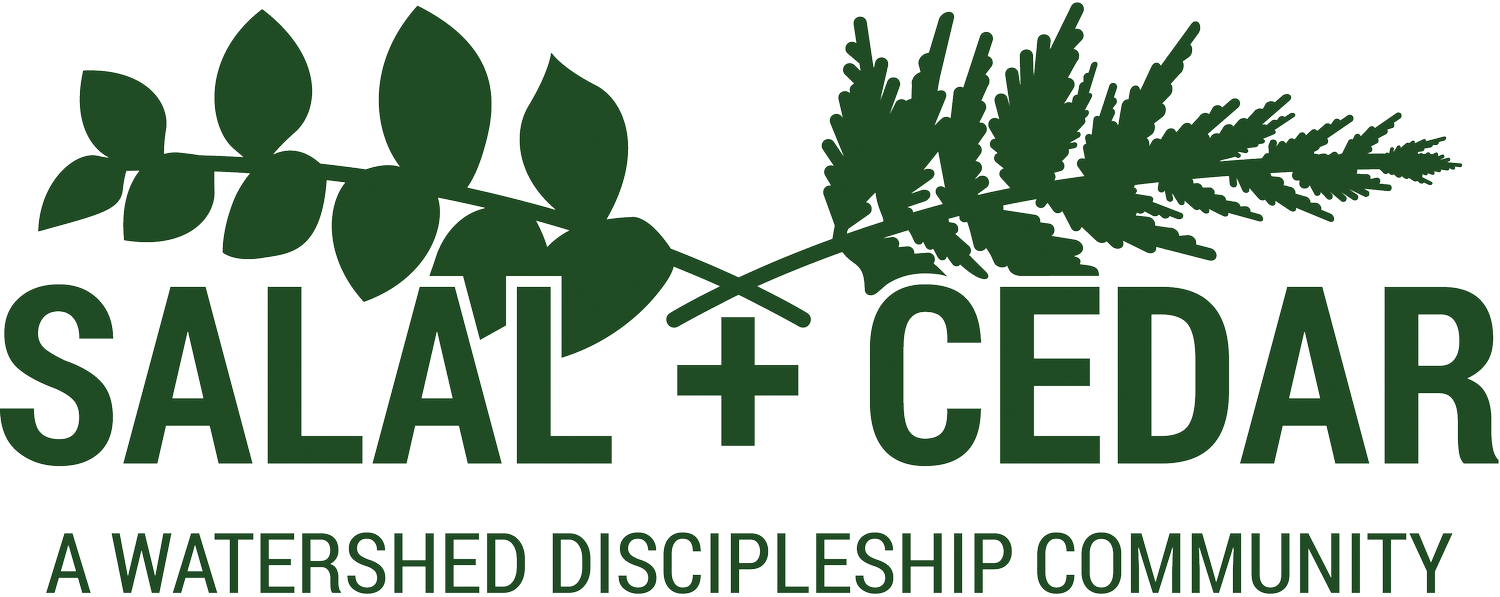Earth Wounds: An Ecological Stations of the Cross
Introduction
Since 2016 Salal + Cedar has hosted an Ecological Stations of the Cross during Holy Week: An annual connection of the Christian faith story, specifically the crucifixion, with the suffering of creation. We meet out of doors, usually in a location that is troubled by environmental harms.
Different individuals and communities prepare and host stations of 5-10 minutes each that draw parallels between the last days and hours before Easter and elements in our climate and extinction crises. The only constant elements are out of doors and some connection to scripture.
Offerings have included litanies, song, body prayers, physical/sacramental acts, direct action, and often have a liturgical element of call and response.
Liturgical Background
Stations of the Cross are a Good Friday tradition of prayer and contemplation on a series of images depicting the events from the time that Jesus is arrested to his burial. We hope to keep this contemplative tone.
Traditionally the passion narrative from John (18:1-19:42) is read in its entirety at different times during this week. It moves from the betrayal and arrest in the garden to Jesus’ burial. If participants intend to use scripture from John in their station we ask them to consider Sarah Parks’ PSA for Christians at Easter.
When a text in the New Testament says "The Jews" (οί 'ιουδαιοι) it does not flat out mean "the Jewish people". It means, in context, things like "temple authorities," "rich elites," "a different group from me that I am mad at," "a group that is trying to urge pagans to full Torah Observance," "a group of Jews from a different place than my group (e.g. urban/rural)," or even "a group I am retroactively throwing under the bus because I'm scared of Rome crushing my group next."
And to substitute an appropriate paraphrase.
The traditional stations are:
(1) Jesus is condemned to death
(2) Jesus carries the cross
(3) Jesus falls the first time
(5) Simon of Cyrene is made to bear the cross,
(6) Veronica wipes Jesus’ face,
(7) he falls the second time,
(8) the women of Jerusalem weep over Jesus,
(9) he falls the third time,
(10) he is stripped of his garments,
(11) he is nailed to the cross,
(12) he dies on the cross,
(13) he is taken down from the cross,
(14) he is placed in the tomb
The traditional “Seven Last Words” are:
“Father, forgive them, for they know not what they do.”
To the “good thief” “Truly, I say to you, today you will be with me in paradise.”
To Mary, his mother: “Woman, behold your son”... and to John: “Behold your mother.”
“My God, my God, why have you forsaken me?”
“I thirst.”
“It is finished.”
“Father, into your hands I commend my spirit.”
Ecological Background
We ask folks preparing stations to consider local concerns like:
Site C Dam
Burnaby Mountain and Kinder Morgan Expansion
Loss of species
Endangered salmon
Access to clean water, Selling of BC water, Water on First Nations
Our participation in environmental destruction
Local/Global Connections
Climate Change
Displacement of Indigenous People
Targeting of Indigenous Environmentalists and Land Defenders
Canadian Corporations involvement
Themes include: repentance, culpability, betrayal, complicity, empire, suffering, compassion, power/powerlessness, death, lament, longing despair, hope and hopelessness, outrage
Stations can include: silence, poetry, movement, song, action, scripture (from the passion narratives or elsewhere). They could be shaped around a concrete event like arrest, trial, death, burial, but they don’t have to be.
We begin with a territorial acknowledgement and round of introductions (names, pronouns, access needs) and follow a roughly chronological order from courts to tomb but each year has different offerings. A typical service has 5-8 stations and ends with a fairly solemn and silent dispersal.
See attached PDF for some sample stations from different years.
